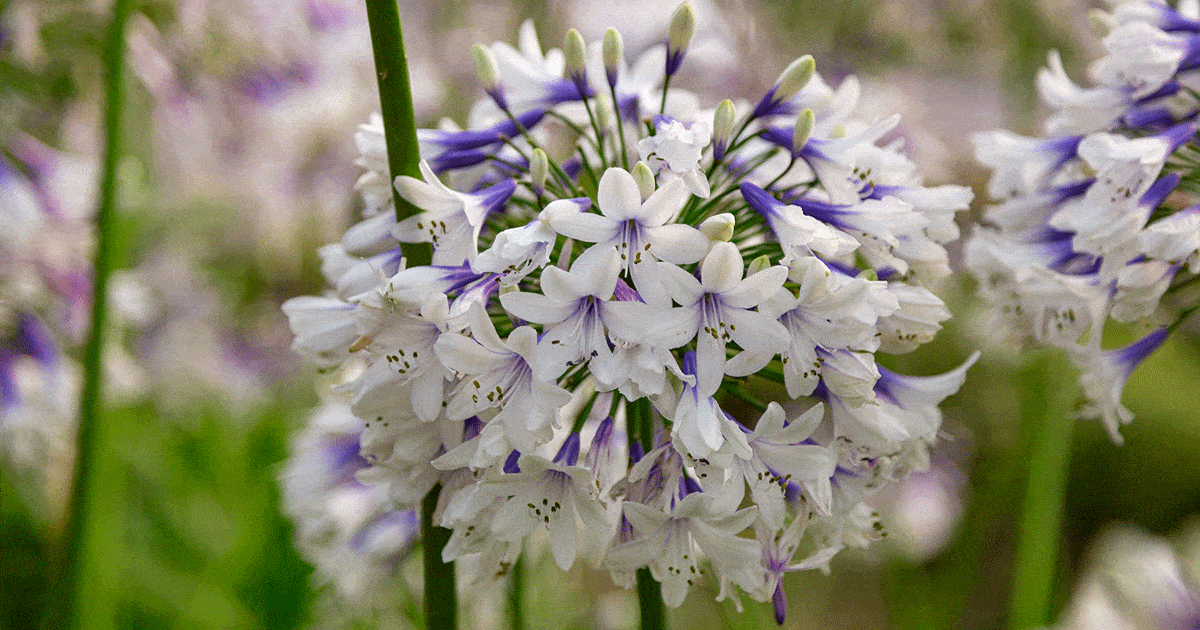Understanding the Art of Agapanthus Treatment: Vital Steps for Healthy And Balanced Growth and Vibrant Flowers
In the world of cultivation, the farming of agapanthus stands as a satisfying venture for those that look for to support these stylish flowering plants. From choosing the ideal range to mastering trimming techniques, the journey in the direction of growing flourishing agapanthus plants is complex and holds the key to unlocking the full possibility of these herb gems.

Selecting the Right Agapanthus Variety

When choosing the best Agapanthus range for your garden, take into consideration aspects such as climate suitability, bloom shade, and development routine. Agapanthus, frequently called Lily of the Nile or African lily, comes in a variety of colors ranging from shades of blue and purple to white. Choose a bloom shade that complements your existing garden combination to create an unified landscape. In addition, consider the climate in your region to guarantee the Agapanthus variety you pick can grow in your specific problems. Some selections are extra forgiving of cold temperature levels, while others like warmer climates. Understanding the growth practice of different Agapanthus selections is crucial for correct positioning within your yard. Some varieties have a clumping development habit, ideal for boundaries or containers, while others have an even more dispersing nature, ideal for ground cover or mass growings. By thoroughly evaluating these variables, you can pick the excellent Agapanthus range to boost the appeal of your garden.
Suitable Growing Problems
Thinking about the optimum ecological needs is essential for successful Agapanthus growing. Agapanthus prospers in well-draining dirt with a somewhat acidic to neutral pH level. When planting, choose an area that obtains complete sunlight to partial shade. In hotter environments, giving some afternoon color can prevent scorching of the fallen leaves. Agapanthus plants are delicate to cold temperatures and should be shielded from frost throughout wintertime months.
To make certain healthy and balanced development and vivid flowers, plant Agapanthus bulbs at a depth of regarding 2-4 inches and room them 8-12 inches apart. Mulching around the base of the plants helps maintain wetness and subdues weed growth.
Watering and Feeding Tips
Maintaining proper dampness levels and providing important nutrients are vital components in the care routine for Agapanthus plants. It is crucial to strike a balance when it comes to watering Agapanthus. If overwatered, these plants favor constantly wet soil however are vulnerable to root rot. During the expanding season, water deeply when a week, guaranteeing the soil is well-draining to avoid waterlogging. In hotter environments or during periods of drought, even more regular watering might be necessary to keep the soil evenly damp. Nonetheless, decrease watering in the winter months to prevent waterlogged conditions.
Feeding Agapanthus is vital for promoting healthy and balanced development and prolific flowers. Use a balanced fertilizer, such as navigate to these guys a 10-10-10 formula, in the very early springtime as brand-new growth emerges. Repeat this application every 6-8 weeks throughout the expanding season. Avoid excessive fertilizing, as it can result in rich vegetation at the expenditure of flowers. Constantly follow the maker's directions for proper dilution and application methods. By adhering like this to these watering and fertilizing suggestions, you can ensure your Agapanthus plants flourish and create dynamic, long-lasting blooms.
Trimming Strategies for Agapanthus
Trimming Agapanthus plants at the proper times and with proper techniques is crucial for keeping their health and wellness and promoting ideal growth and blooming. The perfect time to trim Agapanthus is in late winter season or early springtime before brand-new growth arises.
Deadheading spent blossoms can also redirect the plant's power into producing more blossoms rather than establishing seeds. If you want to accumulate seeds for propagation, leave some blossoms to fully grown and dry on the plant.
Bear in mind to use clean, sharp devices to make exact cuts and decrease the danger of presenting conditions. Agapanthus. Regular trimming will certainly aid keep your Agapanthus looking healthy and balanced and cool while guaranteeing a plentiful screen of stunning blossoms
Dealing With Common Parasites and Illness
After guaranteeing appropriate pruning strategies for Agapanthus, it is crucial to resolve usual bugs and illness that can affect the health and wellness and vitality of these plants. One common parasite that impacts Agapanthus is the Agapanthus gall midge.
Furthermore, Agapanthus plants can Read Full Article endure from origin rot if they are planted in inadequately draining dirt. By being cautious and taking punctual action versus insects and conditions, you can aid your Agapanthus plants flourish and generate vibrant flowers. Agapanthus.
Conclusion
To conclude, mastering the art of agapanthus care includes selecting the best range, giving optimal planting conditions, appropriate watering and fertilizing, suitable pruning methods, and dealing with typical insects and illness. By complying with these crucial steps, you can ensure healthy development and vivid blossoms for your agapanthus plants. Bear in mind to regularly monitor and preserve your plants to promote their overall health and long life.
To make sure healthy and balanced development and dynamic blooms, plant Agapanthus light bulbs at a deepness of regarding 2-4 inches and area them 8-12 inches apart. By following these watering and feeding ideas, you can ensure your Agapanthus plants flourish and produce vibrant, durable flowers.
One common insect that influences Agapanthus is the Agapanthus gall midge. Additionally, Agapanthus plants can suffer from origin rot if they are planted in inadequately draining pipes soil. By following these necessary steps, you can ensure healthy and balanced growth and dynamic blooms for your agapanthus plants.
Comments on “Agapanthus Treatment Tips for Lush and Vibrant Flowers”